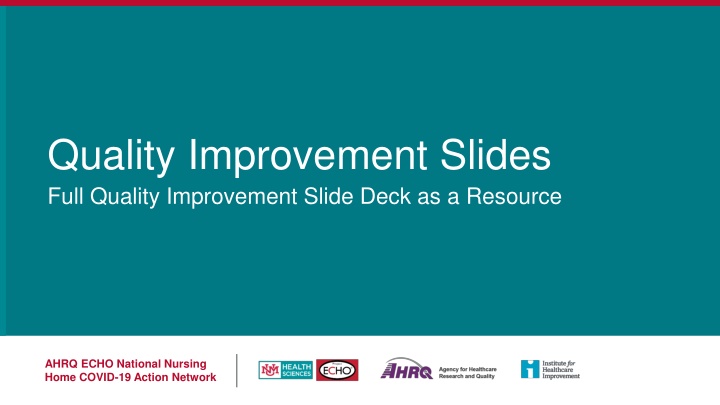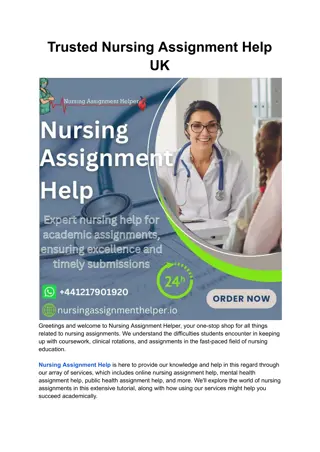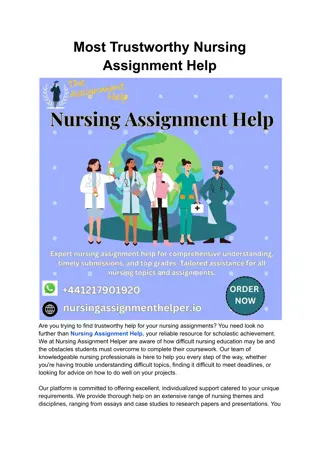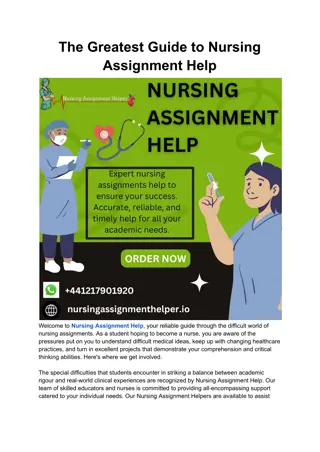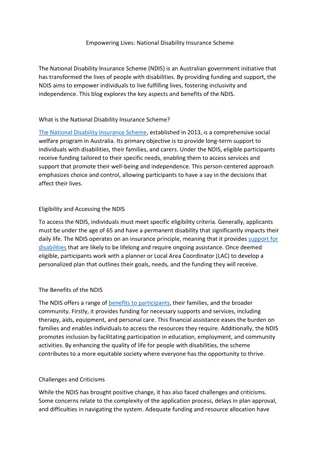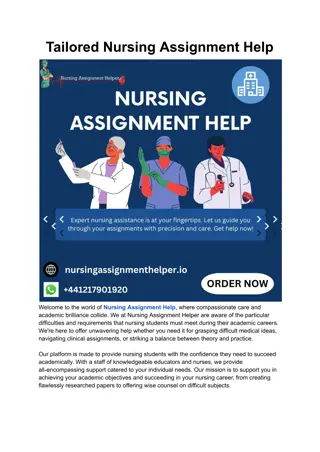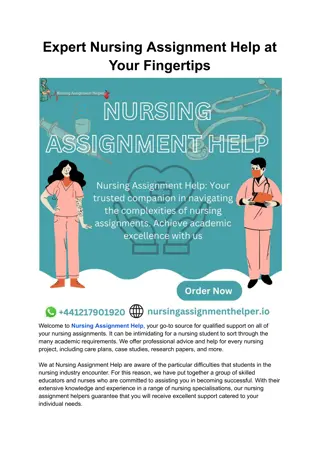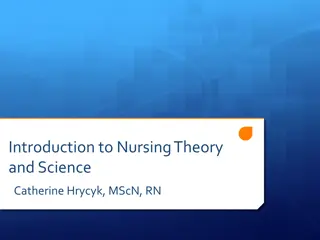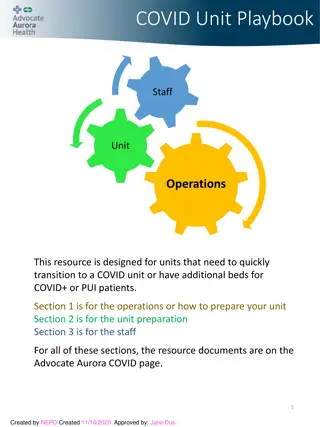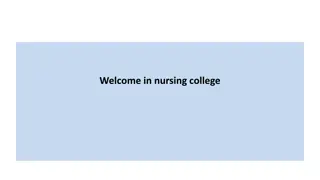Quality Improvement Strategies for Nursing Home COVID-19 Response
Using a comprehensive slide deck as a resource, this presentation delves into quality improvement questions, such as what is working and not working, root cause analysis, and identifying underrepresented groups for better outcomes. It outlines a structured three-part agenda for improvement coaching and case presentations, emphasizing feedback, change ideas, and the Plan-Do-Study-Act cycle. Additionally, it explores the unreliability of humans in critical situations due to memory limitations and fatigue.
Download Presentation

Please find below an Image/Link to download the presentation.
The content on the website is provided AS IS for your information and personal use only. It may not be sold, licensed, or shared on other websites without obtaining consent from the author.If you encounter any issues during the download, it is possible that the publisher has removed the file from their server.
You are allowed to download the files provided on this website for personal or commercial use, subject to the condition that they are used lawfully. All files are the property of their respective owners.
The content on the website is provided AS IS for your information and personal use only. It may not be sold, licensed, or shared on other websites without obtaining consent from the author.
E N D
Presentation Transcript
Quality Improvement Slides Full Quality Improvement Slide Deck as a Resource AHRQ ECHO National Nursing Home COVID-19 Action Network
Improvement Questions: What is working? (Appreciative inquiry) What is not working? Why? Why? Why? (Root cause analysis) Are there particular groups who are not benefitting as much as others? What would success look like? (Aim setting) Whose voices and needs may be under-represented as you decide what is important? How would you know (what would you see) if successful? (Feedback/Measure) What could you try that would get you closer to success? (Change ideas) What could you try out before the next call? (Plan-Do-Study-Act) AHRQ ECHO National Nursing Home COVID-19 Action Network #
Three Part Agenda: Improvement Coaching Case presentation Weekly COVID Content Follow-up on last week What is working? (Appreciative inquiry) What is working? (Appreciative inquiry) What is working? (Appreciative inquiry) What is not working? Why? Why? Why? (Root cause analysis) Are there particular groups who are not benefitting as much as others? What would success look like? (Aim setting) Whose voices and needs may be under-represented as you decide what is important? What is not working? Why? Why? Why? (Root cause analysis) Are there particular groups who are not benefitting as much as others? What would success look like? (Aim setting) Whose voices and needs may be under-represented as you decide what is important? What is not working? Why? Why? Why? (Root cause analysis) Are there particular groups who are not benefitting as much as others? What might you do next? How would you know (what would you see) if successful? (Feedback/Measure) How would you know (what would you see) if successful? (Feedback/Measure) What could you try that would get you closer to success? (Change ideas) What could you try that would get you closer to success? (Change ideas) What could you try out before the next call? (Plan-Do-Study-Act) What could you try out before the next call? (Plan-Do-Study-Act) AHRQ ECHO National Nursing Home COVID-19 Action Network #
Humans are Unreliable The Human Factor Memory Failure: Humans can hold somewhere between 4 and 7 items in their short-term memory Fatigue: Physical and mental exhaustion Boredom: The repeat nature of some of the things we need to do can lead to boredom with the task Overload: Constantly deluge of new information and additional work for nursing home staff Distraction: New policies, procedures Stress: Emotional, financial, family stress Lack of Routine Practice: Staff in new/different roles AHRQ ECHO National Nursing Home COVID-19 Action Network #
Diffusion of Innovation: Rogers Adopter Categories Rogers, E. M. (2003). Diffusion of innovations. New York, Free Press. AHRQ ECHO National Nursing Home COVID-19 Action Network #
Improvement of Quality Saying it happens all the time, without specifics, is a problem that is almost impossible to fix! AHRQ ECHO National Nursing Home COVID-19 Action Network #
Leadership in Nursing Homes Leadership is about accepting responsibility for enabling others to achieve shared purpose under conditions of uncertainty. (Marshall Ganz) Wise compassionate leadership is the ability to do hard things in a human way. (https://hbr.org/2020/12/compassionate-leadership-is-necessary-but-not-sufficient) AHRQ ECHO National Nursing Home COVID-19 Action Network #
How to Make Changes Stick Focus initially on KEY PROCESSES rather than a benchmark Having a goal is important but without the processes to get there, it is useless Evaluate if staff KNOW the process Train staff in the process; Provide different learning modalities KEEP it SIMPLE! Processes that are too complicated will not be remembered or followed Commit to LEARNING You don t have to have it all right the first time through (or the second or the third) AHRQ ECHO National Nursing Home COVID-19 Action Network #
Lay out the Five Attributes of Your Process 1. Who does it? 2. When should it be done? 3. Where is it done? 4. How is it done? 5. What is needed to do it? AHRQ ECHO National Nursing Home COVID-19 Action Network #
Ask 5About 5 Ask 5 staff involved in the process to describe the five attributes of the process IF 5 direct staff can describe the work with the 5 attributes then: You know you have a process in place that people know about You have a good chance that you can achieve 95% performance AND sustain the process over time IF 5 direct staff cannot describe the work with the 5 attributes then: Determine if all 5 cannot describe the work (is there a training/education problem. Determine if it is a COMMON or INFREQUENT failure. Observation of ONE PERSON does not mean it is a common failure. Determine which of the attributes are problematic and work to improve that aspect AHRQ ECHO National Nursing Home COVID-19 Action Network #
Addressing Gaps: Common vs. Infrequent Failure Common Infrequent (More than 1 of the 5 Cannot Articulate the Attribute or Process) Don t rely too heavily on education as THE FIX Get CURIOUS to determine WHY this is occurring Inform staff on the WHY: WHY is this process important WHY do we do it this way Get CURIOUS WHY are they NOT following the process Develop a plan to fix ONE attribute Keep it SIMPLE! (Only 1 of the 5 Cannot Articulate the Attribute or Process) Infrequent does NOT mean you have a bad process. Don t try to make it perfect you will use up too many precious resources. Talk to that one person to reeducate or determine WHY it is occurring. Determine if there is a simple fix MOVE ON to focus on another process AHRQ ECHO National Nursing Home COVID-19 Action Network #
Creating Flow Charts for Reliable Processes Obtain PPE Put PPE On Use PPE Take Off PPE Considerations: Considerations: Considerations: Considerations: Who is responsible for enough PPE? Where is the PPE stored? When is the PPE inventory done? How is the PPE supply verified? What is done when PPE is missing? AHRQ ECHO National Nursing Home COVID-19 Action Network #
Day of Vaccination Flow Chart: High-level Considerations Staff and Patients Arrive at Location Informed Consent Confirmed Vaccination is Given 15 Minutes of Observation 24-48 Hours Post-Vaccination Considerations: Who is confirming consent? How will you handle patients/ staff who change their mind on the day? Where is consent confirmed for your records? Who does patient documentation for your records? Considerations: Documentation Considerations: Who is responsible for observation? Supplies on hand for Adverse Events: Epi-Pens Syncope Additional Meds Staffing for patients with memory impairment Considerations: Staff absence Impairment: Reporting of adverse events Delayed allergic reactions Schedule 2nd Dose Considerations: PPE for staff PPE for patients Transportation to site for physically impaired residents Transportation for memory impaired residents Site pain Fatigue Headache Severe AHRQ ECHO National Nursing Home COVID-19 Action Network #
The Basis for Testing and Learning Model for Improvement: IHI and API Learn in Small Doses Segmentation is trying an idea on a portion of the population where you stack the deck in your favor and are most likely to succeed in order to test the idea without dealing with all the obstacles. Learn in small samples, get your process working, and then spread. The Improvement Guide, 2nd Edition, Langley, Moen, Nolan, et.al., Jossey-Bass 2009 AHRQ ECHO National Nursing Home COVID-19 Action Network #
Rules of Measurement in Reliable Design Keep to a yes/no format Keep it SIMPLE Small samples rather than all Make sure it is DOABLE Person/persons responsible for the design should do the data collection Use MINIMAL RESOURCES Know what the data is telling you OVER TIME Process reliability data used to refine the process until 95% reliability is reached For a process thought to be reliable spot checks need to be made and defects studied Adapted from Roger Resar AHRQ ECHO National Nursing Home COVID-19 Action Network #
Diffusion of Innovation: Rogers Adopter Categories Rogers, E. M. (2003). Diffusion of innovations. New York, Free Press. AHRQ ECHO National Nursing Home COVID-19 Action Network #
Matching Activities to Key Adopter Categories Early adopters Search for successful sites ( Found Pilots ) Create pull through communication Change agents need a plan for sites that come forward Focus on influencers as messengers Invest resources initially with the early adopters Make the work of early adopters observable Early majority Allow for peer-to-peer contact with early adopters Communicate local successes Late majority Peer pressure is necessary Communicate adoption of the changes is inevitable AHRQ ECHO National Nursing Home COVID-19 Action Network #
Translation of Reliability into Practice Standardization Decision aids and reminders Take advantage of pre-existing habits and patterns Make the desired action the default rather than the exception Create redundancy Bundle improvements Encourage teamwork, learning through feedback and training - Resilience Elegert, Family Practice Management, 2005 AHRQ ECHO National Nursing Home COVID-19 Action Network #
4 Steps to Mitigate Threats (during COVID and beyond) 1. Make risk visible 1. Use your data: Track your outcomes 2. Know when things go wrong 3. Highlight opportunities where things could go wrong 2. Honor existing procedures/protocols and adopt new ones as needed 3. Double down on efforts that address psychological safety and the added stress 4. Be transparent and account for the current environment 1. Ensure everyone in your facilities and larger community (families, consultants, etc) KNOW the current state Martin, Berry, Mate. How to Safely Restart Elective Surgeries After a COVID Spike. Harvard Business Review; November 19, 2020. AHRQ ECHO National Nursing Home COVID-19 Action Network #
